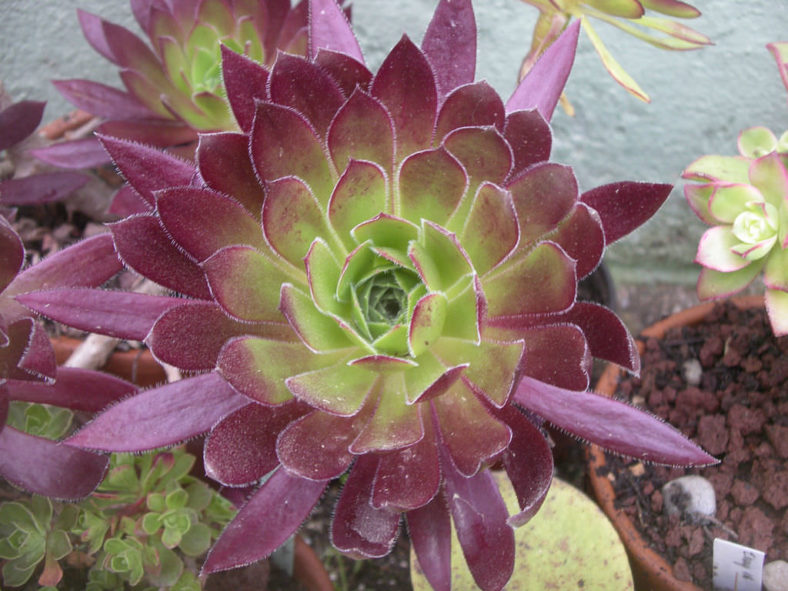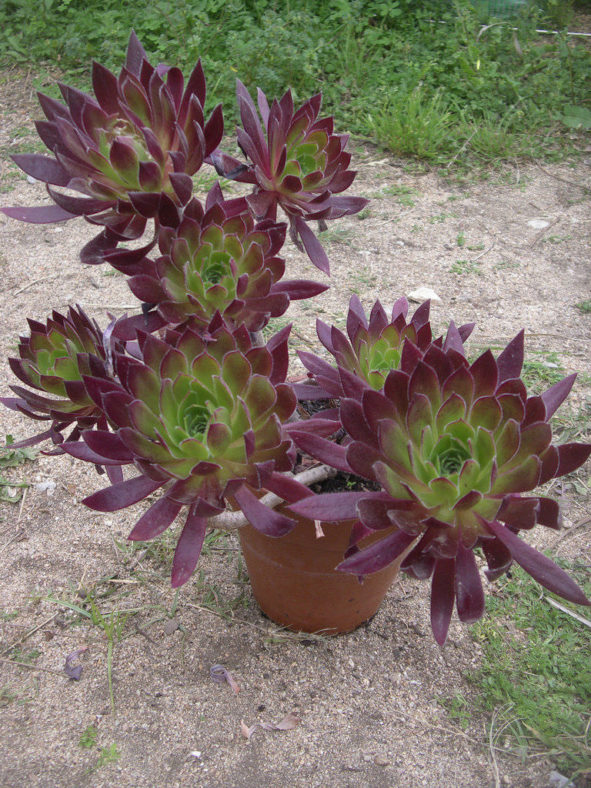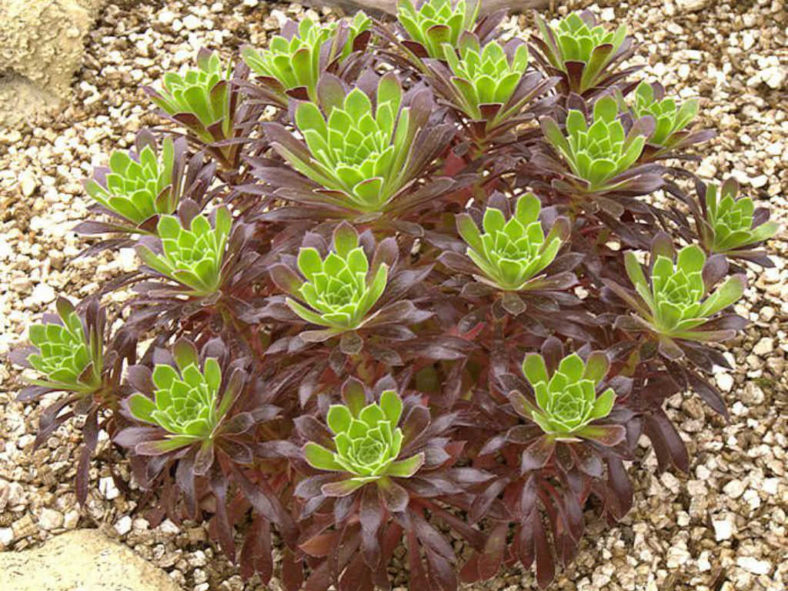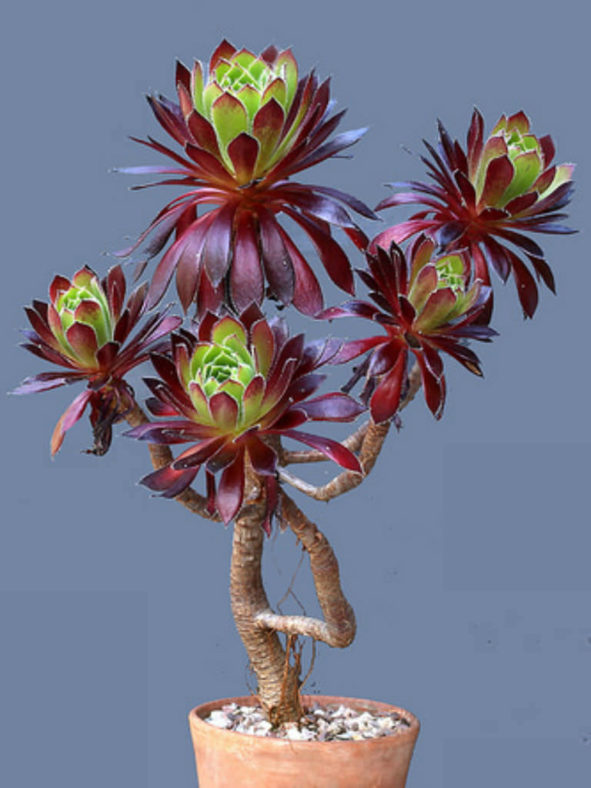Scientific Name
Aeonium simsii × arboreum 'Zwartkop'
Synonym(s)
Aeonium 'Carmen'
Scientific Classification
Family: Crassulaceae
Subfamily: Sempervivoideae
Tribe: Aeonieae
Genus: Aeonium
Origin
Aeonium simsii × arboreum 'Zwartkop' is a hybrid created from a cross between Aeonium simsii and Aeonium arboreum 'Zwartkop'. The origin and breeder of this hybrid are unknown.
Description
Aeonium simsii × arboreum 'Zwartkop', also known as Aeonium 'Carmen', is a beautiful, well-branched succulent with branches that hold rosettes of green leaves edged in reddish-purple. The leaves are narrow and pointed, similar in shape to Aeonium simsii. They take on beautiful shades of red and purple when the plant is exposed to intense sunlight.
The yellow star-shaped flowers appear in large, flat-topped clusters on densely leafy stalks in spring.
This hybrid is often sold as Aeonium simsii × 'Zwartkop'.

How to Grow and Care for Aeonium simsii × arboreum 'Zwartkop'
Hardiness: USDA hardiness zone 9b to 11b: from 25°F (-3.9°C) to 50°F (10°C).
Aeoniums do not like hot or dry weather. Therefore, they may go dormant in summer and do not require any water except in arid conditions. In extreme heat, their leaves will curl to prevent excessive water loss. Growing them in moist shade will keep them growing, but their true growth season is winter to spring when temperatures are cool, 65 to 75 °F (18 to 24 °C), and damp. In the winter, water whenever the soil has dried out. Test by poking your finger into the soil an inch or 2 (2.5 to 5 cm). Too much moisture or leaving them in wet soil will cause root rot.
A sandy loam or a regular potting mix is better than a cacti- and succulents-specific mix, since Aeoniums need some moisture. If you grow them in containers, repot them with fresh potting soil every 2 to 3 years.
Feed during the growing season with a half-strength balanced fertilizer every month or so. Do not feed while the plant is dormant.
Learn more at How to Grow and Care for Aeonium.
Links
- Back to genus Aeonium
- Succupedia: Browse succulents by Scientific Name, Common Name, Genus, Family, USDA Hardiness Zone, Origin, or cacti by Genus
Photo Gallery
Click on a photo to see a larger version.


